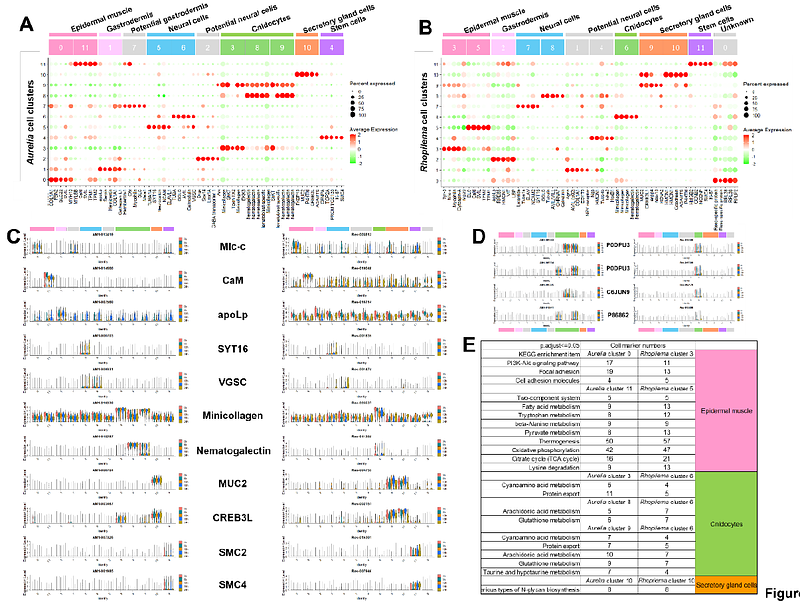Single-cell analyses reveal scyphozoan conserved and specific genes contribution during tissue regeneration in two jellyfish

Single-cell analyses reveal scyphozoan conserved and specific genes contribution during tissue regeneration in two jellyfish
Li, Y.; Law, S. T. S.; Nong, W.; So, W. L.; Xie, Y.; Leung, T. C. N.; Li, T. H.; Tse, J.; Yip, H. Y.; Jin, O.; Zhang, J.; Chui, A. P.; Lau, K. F.; John, A.; Kai, Z. p.; Bendena, W. G.; Hayward, A.; Wei, Y.; Chan, T. F.; Ngai, S. M.; Hui, J. H. L.
AbstractThe phylum Cnidaria is the outgroup of Bilateria and includes sea anemones, corals, hydroids, and jellyfish. Cnidarians play crucial ecological roles in marine ecosystems, including the formation of highly diverse and productive coral reefs, and acting as important predator and prey species. Cnidarians are also well known for their remarkable regeneration capacities. Here, we report single-cell RNA sequencing during bell regeneration in two species of scyphozoans or true jellyfish, Aurelia coerulea and Rhopilema esculentum. We delineated 12 cell populations in Aurelia and Rhopilema, and revealed their respective marker genes and enriched gene pathways. Conserved transcription factor Otx and Wnt/{beta}-catenin signalling pathway genes were identified during regeneration processes. Additionally, we discovered two conserved, sequentially activated modules during regeneration, with stem cells, gastrodermal cells, neural cells, and secretory gland cells modulated in the first phase, followed by cnidocytes in the second phase. Further comparison among cnidarian genomes identified a suite of scyphozoan lineage-specific genes, a subset of which were frequently significantly expressed in cnidocytes in both jellyfish species during the first phase of regeneration. This study reveals key insights into the evolution and contribution of conserved and novel genes to the formation of lineage-specific genetic networks and biological processes.